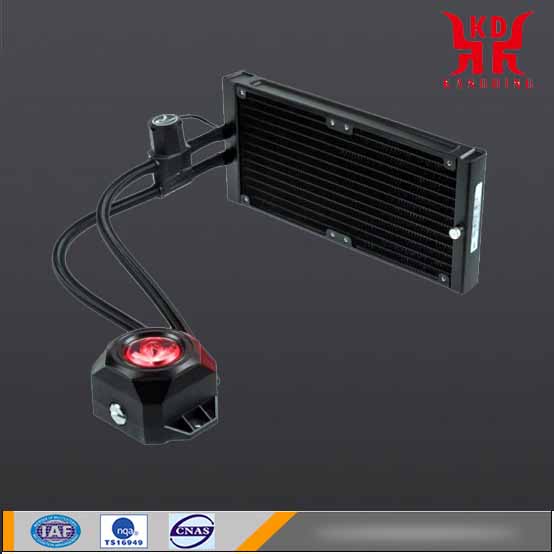
The thermal conductivity of copper is 1.69 times that of aluminum, so under the same other conditions, the pure copper heat sink can quickly remove heat from the heat source. But the texture of copper is a problem. Many advertised "pure copper radiators" are actually not 100% copper. In the list of copper, those with a copper content of more than 99% are called acid-free plain copper, and the next grade of red copper is copper with a copper content of less than 85%. For 13 years, most of the pure copper radiators on the market have copper content between the two. The copper content of some low-quality pure copper radiators is even less than 85%. Although the cost is very low, its thermal conductivity is greatly reduced, which affects the heat dissipation. In addition, copper also has obvious shortcomings, such as high cost, difficult processing, and large heat sink quality, which hinders the application of all-copper heat sinks; The hardness of red copper is not as good as aluminum alloy AL6063, and the performance of some mechanical processing (such as slitting, etc.) is not as good as aluminum; The melting point of copper is much higher than that of aluminum, which is not conducive to problems such as extrusion.
Copper and aluminum heat sink combination technology
After considering the respective shortcomings of copper and aluminum, some high-end radiators in the market often use a copper-aluminum combined manufacturing process. These heat sinks are usually made of copper metal base, and the heat sink fins are made of aluminum alloy. Of course, in addition to the copper bottom, there are also methods such as using copper pillars for the heat sink, which are also the same principle. With high thermal conductivity, the copper bottom surface can quickly absorb the heat released by the CPU; Aluminum fins can be made into shapes that are most conducive to heat dissipation with the help of complex technical means, and provide larger heat storage space and quickly release, which has found a balance in all aspects.
The heat dissipation from the CPU core to the surface of the heat sink is a heat conduction process. For the base of the heat sink, since it is in direct contact with a small area heat source with high heat, it requires the base to quickly conduct heat away. The use of materials with higher heat transfer coefficient for the heat sink is very helpful to improve the heat transfer efficiency. It can be seen from the heat conduction system comparison table that, for example, the thermal conductivity of aluminum is 237W/mK, and the thermal conductivity of copper is 401W/mK. Comparing the heat sink of the same volume, the weight of copper is 3 times that of aluminum, and the specific heat of aluminum is only 2.3 times that of copper. Therefore, under the same volume, copper radiators can hold more heat than aluminum radiators and heat up more slowly. With the same thickness of the heat sink base, copper can not only quickly absorb the temperature of heat sources such as CPU Die, but also its own temperature rises more slowly than aluminum heat sinks. Therefore, copper is more suitable for making the bottom surface of the heat sink.
However, the combination of these two metals is difficult, and the affinity between copper and aluminum is poor. If the bonding process is not good, a larger interface thermal resistance (that is, the thermal resistance between two metals due to insufficient contact) will be generated. In actual design and manufacturing, manufacturers always try to reduce the thermal resistance of the interface as much as possible to maximize their strengths and avoid weaknesses, which often reflects the manufacturer's design capabilities and manufacturing processes.








